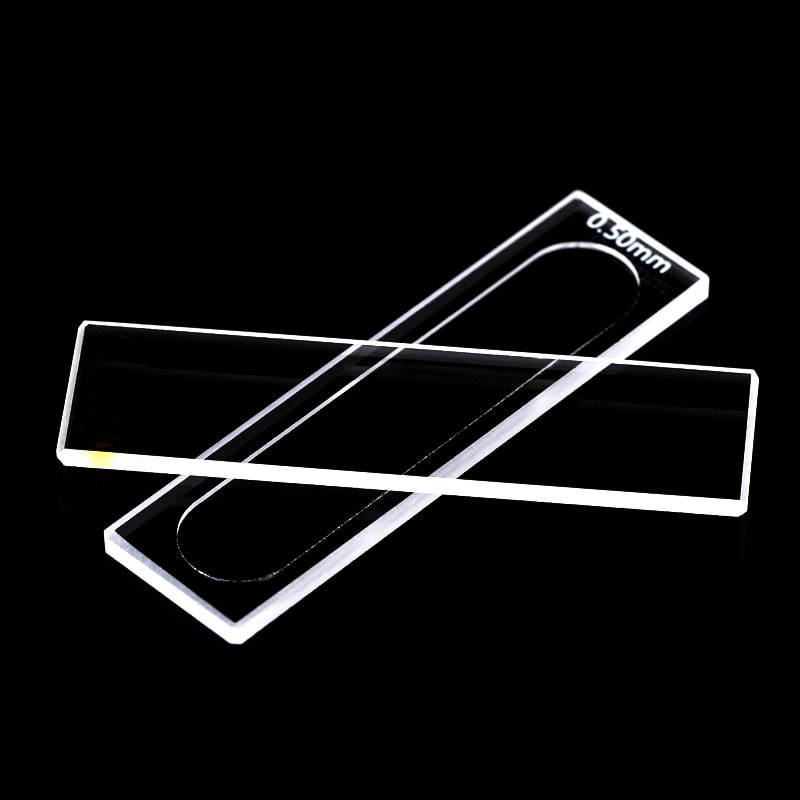The spectrophotometry method is the fundamental element of discovery in science. It unravels the mysteries of radiation absorption and transmission at particular wavelengths. At its heart lies the cuvette, a simple but crucial vessel that is used to store specimens for analysis. Cuvettes may seem easy to make, but their intricate details, from cuvette length to the material selection, hold the key to obtaining accurate data on substance concentration and purity. Let’s take a dive into this fascinating world where dimensions and size of cuvettes determine the outcomes of every experiment.
Power of Cuvette Path length
Imagine a beam of light passing through a sample. The result depends on the length of the path in the cuvette. This is the amount of that light travels through the fluid. For many labs, a cuvette with 1 cm is the ideal length because it strikes the balance between sensitivity and practicality. What’s the reason? The longer the path extended, the greater amount of light is absorption. This increases the signal in small samples. However, for highly concentrated solutions such as nucleic acids or proteins, shorter paths can be a game-changer. This helps reduce dilution and protect the precious samples while cutting down on the time needed to prepare. What can we learn from this? Achieving the right match between path length and samples’ requirements is a fine art that boosts reliability.

Image credit: cuvet.co
Cuvette Dimensions and Size more than meets the Eye
It’s not only about the amount of liquid that can be contained inside the vessel, it’s equally about how the vessel works with the spectrophotometer. Each cuvette is made for particular tasks and comes in a variety of shapes and sizes. Semi-micro cuvettes are smaller in size and thicker walls. They are ideal for smaller sample volumes. Thick walls allow light to traverse the sample and without wasting one drop. This is a significant improvement over a standard cuvette. It takes less steps to pipette, has less room for errors and results that are stable. It’s a clever modification that shows that size isn’t just a number, it’s a strategy.
The 1cm Length of the Path Cuvette: A Lab Favorite
Why does the 1 cm path length cuvette reign supreme in so many experiments? It’s the ideal size for biological measurements, where samples are often scarce and every milliliter matters. This design is a classic and provides reliable readings of absorbance without overloading the detector. It’s ideal for all kinds of tests, including DNA purity tests to enzyme assays. It’s not the ideal choice for every situation. If you swap it out for a cuvette that has an entirely different geometry or length, for instance one used in emission studies and the results may be wildly distorted. Precision is dependent on choosing the correct instrument and not just the most well-known one. A cuvette that is not matched to the right one is like a mis-tuned instrument close, but not quite the right way.
Material Matters that go beyond Size and Path
Cuvette dimensions are only half of the tale. The choice of material is the final piece. Glass and quartz cuvettes shine for their high transmission rates that let light flow through with little interference. They are strong, reusable and ideal for spectroscopy. On the flip side plastic cuvettes provide affordability and convenience to the table. There’s no cleaning, no cross-contamination. Just use and throw away. These are perfect for quick aqueous tests, or DNA/RNA tests. What’s the cost? The trade-off? Quartz is the preferred material for those who are adamant about purity, whereas plastic is the choice of the practical.
Precision in Practice
Cuvettes’ flexibility is what makes them so attractive. Spacers with short pathways can be used to handle concentration sample. The larger vessels are better suited for bulkier volumes. The accuracy of the data is dependent on the length of the path along with the size and substance that is used. Labs are analyzing the rare protein. A semi-micro cuvette that has a shorter pathway could prevent dilution headaches and give accurate results quickly. Compare that to a slow change of cuvettes during the experiment, and the results are shaky. Small details make the greatest impact on spectrophotometry.
Cuvettes may be small, but their impact is immense. From the 1cm path length cuvette, to custom-designed dimensions, these vessels help bridge the gap between the sample and knowledge. If you’re after high-quality or even concentration, the correct cuvette will turn a good measure into an excellent one.